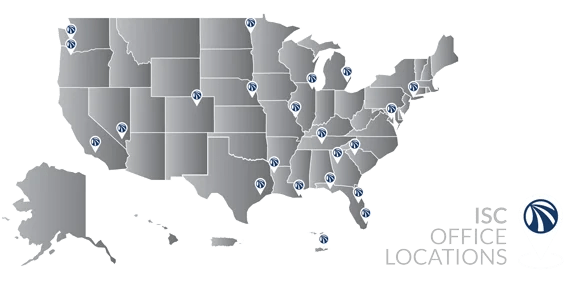INNOVATIONS, IDEAS, & INSIGHTS
About the Blog
ISC experts share their thoughts on current innovation, insights, and thought leadership on important industry topics and corporate responsibility.
Archives
October 2021
September 2021
June 2021
May 2021
April 2021
February 2021
January 2021
December 2020
November 2020
October 2020
August 2020
July 2020
May 2020
April 2020
March 2020
February 2020
January 2020
Categories
What Really Caused the Great Chicago Fire?
11/27/2020
From October 8-10, the Great Chicago Fire burned through the city of Chicago. In the end, the fire killed 300 people, destroyed about 3.3 miles of the city, and burned 17,500 buildings.
While the exact cause of the fire was never exactly determined, it is believed to have started in a barn belonging to a family by the name of O’Leary. It rapidly spread to surrounding buildings and spreading rapidly. It was aided by a drought and the fact that most buildings in the city at the time were constructed of wood. The most common belief is that Mrs. O’Leary’s cows knocked over a lantern, igniting Great Chicago Fire.

But what if it wasn’t Mrs. O’Leary’s cow at all?
There is evidence that the Great Chicago Fire was actually caused by a meteorite shower, not Mrs. O'Leary's cow. A fragment of Biela's Comet is believed to have broken off, resulting in the reported spontaneous ignitions, lack of smoke, and "fire balloons" falling from the sky reported that night. This theory would also explain the fires that occurred north of Chicago in Peshtigo, Wisconsin at the same time. The Peshtigo Fire resulted in 2,000 deaths and 4 million acres of farm and prairies burned.
A meteorite is a small particle of matter that originates in the solar system and reaches the surface of the earth without being completely vaporized. Meteor showers result in between 50,000 and 100,000 tons of space dust and meteorites falling on the planet every year.
So what does this have to do with modern emergency management and disaster recovery?
As emergency managers, we must continuously debunk these historical myths so we’re informed and can take a proactive approach for all hazards. While not common, celestial disasters have occurred in the past. In order to mitigate, we just need to know where to look for them. And some of our country’s top agencies are dedicating resources to help do just that.
In 2015, FEMA and NASA came together to form the Planetary Impact Emergency Response Working Group (PIERWG) in order to “"develop guidance to prepare for any potential impact of our planet by a large natural object."
NASA also established the Planetary Defense Coordination Office (PDCO) to manage its ongoing mission of planetary defense. According to NASA’s website, the PDCO:
- Provides early detection of potentially hazardous objects (PHOs) – the subset of NEOs whose orbits predict they will come within 5 million miles of Earth’s orbit; and of a size large enough (30 to 50 meters) to cause significant damage on Earth;
- Tracks and characterizes PHOs and issues warnings of the possible effects of potential impacts;
- Studies strategies and technologies for mitigating PHO impacts; and
- Plays a lead role in coordinating U.S. government planning for response to an actual impact threat.
Understanding these historic events will help us be prepared for future disasters.
About the Blog
ISC experts share their thoughts on current innovation, insights, and thought leadership on important industry topics and corporate responsibility.

